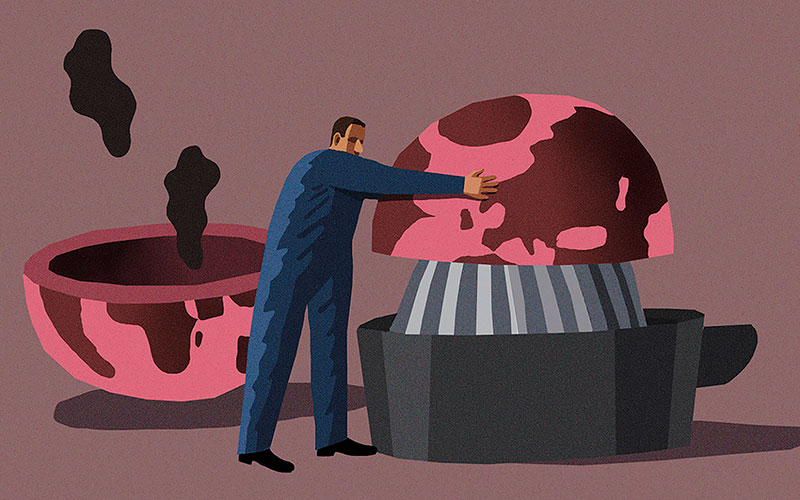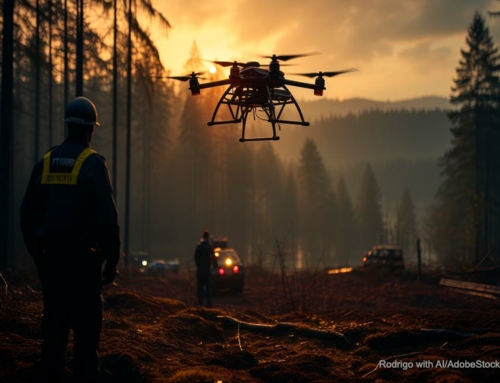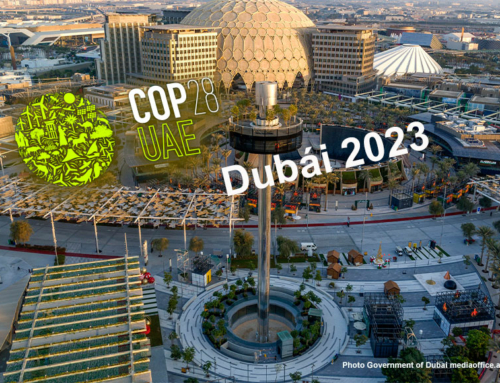The evolution of the homo genre has been such a vertiginous race that it is an event unparalleled on our planet, since we had never seen anything like it on the evolutionary scale of any kind. This rapid progress has been observed through the measurements of the skulls found by the paleoanthropologists. In a period of 2.5 million years the brain size of our genre In a period of 2.5 million years, the brain size of our genre has more than doubled, from 650 cc to 1450 cc. This race was initiated by the Homo habilis, first manufacturer of stone utensils, which began the Paleolithic and incidentally earned the title of first Homo.
However, for 40,000 years ago, when Homo sapiens arrived in Europe, this measurement has already become ineffective for the short time that has elapsed, insufficient to appreciate any variation in the size of our brain mass. Since then, instead, we have resorted to observing the cultural evolution of our species. So human progress is measured through his work, thought, beliefs and response to the environment. That is, its weapons, utensils, painting, sculpture, architecture, literature, religion, philosophy, commerce, science, technology and lately for its notorious responsibility in the modification of the Earth system.
The Earth system is a science that encompasses chemistry, physics, biology, mathematics, and applied science that treats our planet as an integrated system and seeks to understand the physical, chemical, biological, and human interactions that determine past, present, and future states from the earth.
We are currently in the Holocene, a geological epoch that began about 12 thousand years ago, at the end of the Würm glaciation, after 60,000 years of ice and snow. With the cancellation of the cold and monotonous white landscapes emerged a long spring that has lasted until our times, which took advantage of Homo sapiens to expand throughout the latitudes and heights of the planet. The handful of survivors of that bloody ice age were so successful that their descendants multiplied to 7,500 million individuals, of whom nearly 6,000 million were added in the last 120 years, since at the beginning of the 20th century we were 1,600 million beings.
Some scientists and researchers maintain that the Holocene has already concluded and has given way to the Anthropocene, a name coined in 2000 by Paul Crutzen. The Nobel Prize in Chemistry, specializing in atmospheric chemistry, marked the new era because in it human activities began to cause biological and geophysical changes on a planetary scale. Although the Anthropocene has not been officially accepted as a geological age, the concept circulates through innumerable means and it has become common to talk about it, especially in specialized media.
The scientists Johan Rockström of Sweden and Will Steffen of the United States grouped a series of data obtained by researchers in different countries and times. Using this material, in a joint work with scientists from the Stockholm Resilience Center, in 2009 and 2015 they drew up “a list with nine limits of the planet that would be extremely dangerous to pass, which has already occurred in the case of four of them” , as we read in a report by UNESCOs. These four limits are: the climate, the alteration of the vegetal cover, the extinction of animal species and the alteration of the biogeochemical flows, in which the cycles of phosphorus and nitrogen play an essential role.
The other five borders of the Earth correspond to consumption of primary resources, energy use, population growth, economic activity and deterioration of the biosphere. According to the report, since the Second World War these limits have soared that some have called it the “time of great acceleration”. Others even speak of “hyper acceleration” initiated in the 1970s. All these trends have been described as “unsustainable”.
In 1946 none of the nine limits had yet been crossed, and “humanity consumed less than one planet. But the dynamic created did not stop and the situation worsened in the early 1970s. The scientific data accumulated, and the warning signs multiplied. In those two moments it would have been possible to undertake another path, but today it is much more difficult to do so, “said the report.
Despite all this, geologists think that the name Anthropocene does not yet meet the traditional nomenclature of stratigraphy to be defined as a new geological age. For example, Stanley Finney, head of the International Stratigraphy Committee, in an interview with the newspaper El Tiempo de Bogotá, in 2016, stated: “The geological time scale (reference frame to calculate the Earth’s ages) is measured at from the records of the rocks, which give evidence of our history and time, whether to talk about mass extinctions, climate change or the types of life on the planet. My concern with the Anthropocene is that it is not documented with rock bodies. ”
To maintain that the Anthropocene does correspond to a new geological epoch, a team of high-level researchers relied on the discovery of radioactive waste left by atomic bombs. Its specific location is located in the Ría de Bilbao, Spain, in a strip of seven meters of sediment accumulated by industrialization. “We have already changed the Earth: the Anthropocene is the moment in which humans manage to change the life cycle of the planet, when humans remove the planet from its natural variability,” explains Alejandro Cearreta, a Spanish scientist and member of the team, made up of 35 specialists After seven years of research the group agreed to consider the Anthropocene as a new geological epoch, included within the Quaternary period, information contained in an article published by the newspaper El País.
The demographic explosion and the vertiginous advance of science and technology have not given time to comply with the geological lapses of the stratigraphy required to qualify that a change of geological epochs has occurred. It may be that the records found in the rocks or in the composition of glacial ice are inconclusive, but this does not mean that our large-scale intervention has not happened and is on its way to a dangerous outcome. Human affectation of the planet has been a much faster process than the development of brain size from Homo habilis.
In our opinion, just as we stopped measuring the growth of the human brain to establish its evolutionary line, and it was changed by observing its cultural advance, it would also be possible to change or complement the stratigraphy with other methods. There is a lot of measurable and quantifiable evidence. It is enough to know that the amount of parts per million of CO2 (PPM) in the atmosphere was in the order of 300 PPM until the appearance of homo sapiens, which has increased to 400 PPM due to greenhouse gas emissions. An article by BBC Mundo, dated 10-24-2016, announced that for the first time it had reached 400 PPM. “The record of CO2 emissions that marks the beginning of a new era of climate change”, informed the owner.
The widening of the so-called holes in the ozone layer is also clear evidence, quantifiable in other ways, of the effect of human activities. The holes arose as a result of emissions of chlorofluorocarbon compounds into the atmosphere, used as fluids in refrigerators, air conditioners and atomizers. When changing the components of these fluids, the ozone layer has begun to subside, but will not recover its natural level until 2080, unless this date is prolonged due to new events. They are footprints in the atmosphere as valid as rocks.
The difficulty of the acceptance of the Anthropocene as a new geological epoch was expressed by a reader of Smithsonianmag.com, in a scathing comment referred to the article “The age of humans”:
“This is ridiculous. We are in the midst of a mass extinction caused by humans, but some geologists want to see changes in the Earth’s strata before joining the Anthropocene. Science is an impartial tool, but of course it is forged with the bias of scientists. We’re all human. It is as if the geologists were not happy that this term was not proposed from within geology, which is not what has traditionally characterized the eras defined by geology. But what good is science if it cannot mobilize the necessary changes for life to prosper on this planet? Geology will not have the opportunity to name the next epoch if we are no longer to see it. ”
The level of 400 PPM of CO2 has increased the natural greenhouse effect of the Earth. This means that now there are more infrared rays trapped in the atmosphere and therefore the temperature increases, which has already exceeded its own record 17 times in the last two decades. Global warming has effects on the living beings of the planet, but also on the abiotic components such as glaciers, polar ice and permafrost. It also manifests with extraordinary and unprecedented events such as the two hurricanes that acquired category five for the first time in the Atlantic, in 2017.
All these phenomena are evidence of the human intervention of the environment. The corresponding question is: Would the situation improve anything just by changing its name?
More than the name of an era, what should interest us is to stop climate change and safeguard what nature has cost it to build for hundreds of millions of years. However, defining an era with its own name, and more in this case, due to the transcendence and seriousness that it involves, would have an appreciable value. The constant increase in temperature is a global reality, as well as the increase in the concentration of CO2 in the atmosphere.
Officializing entry into a new geological epoch would have an important psychological effect. Just imagine the impact that this holder would have in the main newspapers of the planet: “It’s official, we’re in Anthropocene.” And this impact would not only be in the public but in many institutions, companies and legislative bodies around the world. The officialization of a situation raises your credibility. From that moment the Anthropocene would have more frequent place in the media and would be subject to discussions and debates in universities, schools, assemblies, forums, opinion programs, places, etc.
In conclusion, giving way to the recognition of the Anthropocene as the new geological epoch, would constitute a milestone in the fight against climate change. The faster the decision is made, the better it will be for the preservation of life on the planet.
Sandor Alejandro Gerendas-Kiss







Leave A Comment